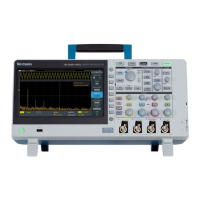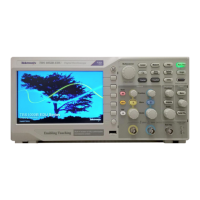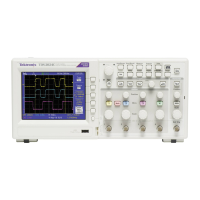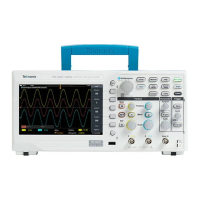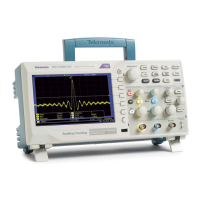*PSC Command
The *PSC command controls the Enable Registers contents at power-on. Sending
*PSC 1 sets the Enable Registers at power on as follows:
■
DESER 255 (equivalent to a DESe 255 command)
■
ESER 0 (equivalent to an *ESE 0 command)
■
SRER 0 (equivalent to an *SRE 0 command)
Sending *PSC 0 lets the Enable Registers maintain their values in nonvolatile
memory through a power cycle.
NOTE. To enable the PON (Power On) event to generate a Service Request, send
*PSC 0, use the DESe and *ESE commands to enable PON in the DESER and
ESER, and use the *SRE command to enable bit 5 in the SRER. Subsequent
power-on cycles will generate a Service Request.
Queues
The *PSC command controls the Enable Registers contents at power-on. Sending
*PSC 1 sets the Enable Registers at power on as follows:
Output Queue
The instrument stores query responses in the Output Queue and empties this
queue each time it receives a new command or query message after an <EOM>.
The controller must read a query response before it sends the next command (or
query) or it will lose responses to earlier queries.
CAUTION.
When a controller sends a query, an <EOM>, and a second query, the
instrument normally clears the first response and outputs the second while
reporting a Query Error (QYE bit in the ESER) to indicate the lost response. A
fast controller, however, may receive a part or all of the first response as well. To
avoid this situation, the controller should always read the response immediately
after sending any terminated query message or send a DCL (Device Clear)
before sending the second query.
Status and Events
TBS2000 Series Programmer 279
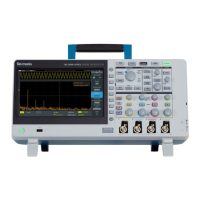
